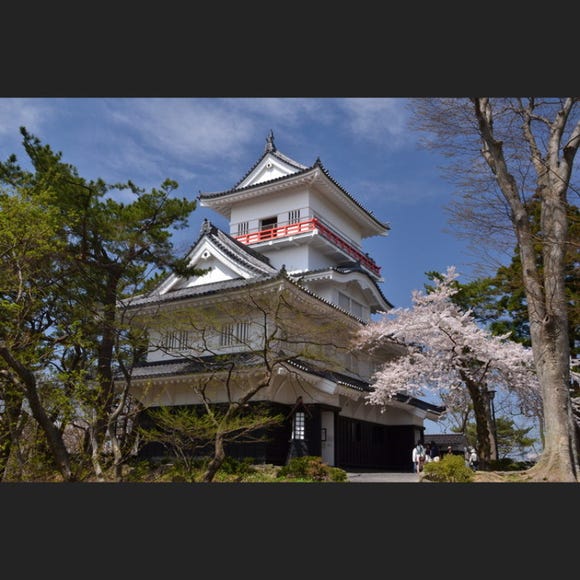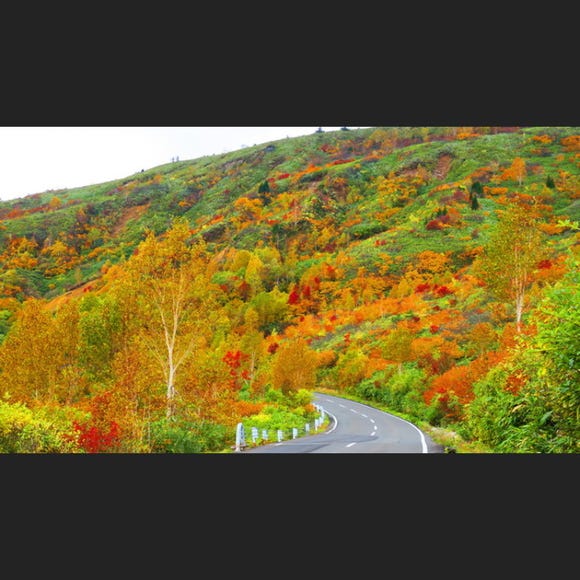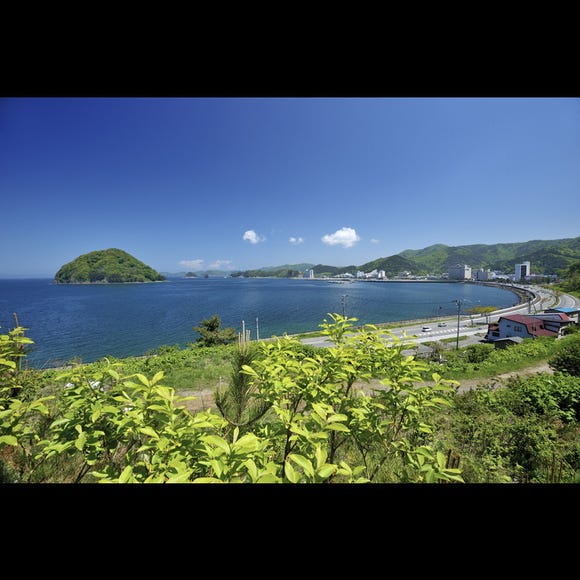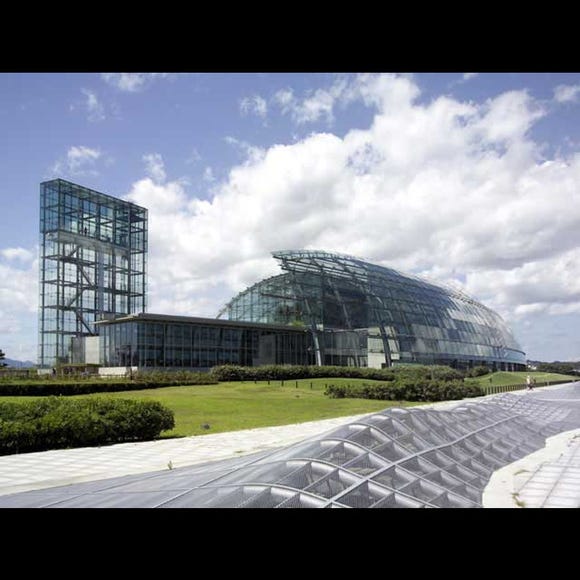
The Ultimate Rail Journey? What Surprised An American About Japan's Shinkansen Bullet Trains
- Written by: Fujico
"Riding the Shinkansen" is one of the top activities tourists anticipate when visiting Japan. The Japanese bullet train is so esteemed that, in many ways, it has become a symbol of the country itself!
Main image: PIXTA
- Table of Contents
-
- Gran Class is like First Class on a plane?! True luxury in rail travel!
- The "Seven Minute Miracle" found only in Japan! What is this surprising ritual that's more than just cleaning?
- Is this really 300km/h? No vibration, such a smooth ride!
- In-car sales at your seat?! The quality of service and facilities are like those found on an airline
- The surprising smoking area
- It's confusing that eating and drinking on ordinary trains isn't ok, but OK on the Shinkansen?
Many international enthusiasts admire the Shinkansen, but what captivates them about these trains? To uncover the allure and surprises of the Japanese bullet train, we consulted our English editor, Timothy, an American who has resided in Japan for over 20 years. Although travel to Japan is currently restricted, keep his insights in mind for future visits.
Gran Class is like First Class on a plane?! True luxury in rail travel!

Timothy experienced Gran Class for the first time on a trip to Aomori and was astonished by the exceptional service and ride quality.
"I've never flown First Class, but Gran Class must be comparable. It was a perfect ride!"
When Timothy first visited Japan, he used a Green Car with the Japan Rail Pass. Although the difference between the Green Car and Gran Class is about 3,000 to 5,000 yen, he found the latter offered far more services than he had anticipated.
"Firstly, there's the complimentary drink service. I enjoyed sampling some sake and wine, all sourced from the regions the train passes through—in my case, Tohoku. I also savored a light meal served elegantly in a Japanese bento box. My train departed early in the morning, and by the time I reached Aomori, I was feeling a little tipsy (laughs), but the experience was incredible."
Gran Class seats are wide, feature footrests, and can recline up to 45 degrees, providing excellent comfort. While the Green Car has four seats per row, Gran Class has only three, ensuring a more spacious and uncrowded environment.
"I haven't often used American tourist trains so much, but I have taken the Acela Business Class, which would be the closest comparison. Still, I've never seen seats quite like Gran Class anywhere else. The seats were comfortable, the scenery enjoyable, and the service adequate, but nothing particularly memorable. On the Japanese bullet train, the experience is entirely different from the moment you board. Gran Class elevates it further—like basking in a bubble of luxury while the beautiful countryside slips past. It's really something else!"
First Class airline seats are expensive, but Shinkansen Gran Class seats are relatively affordable compared to regular seats, costing around 11,000 to 16,000 yen. Receiving this level of service on a train is astonishing, and it's definitely worth trying out!
The "Seven Minute Miracle" found only in Japan! What is this surprising ritual that's more than just cleaning?

Japanese cities and trains are renowned for their cleanliness, and the impeccably maintained Shinkansen is no exception. The swift and thorough cleaning process has become a popular topic among international travelers.
"When a Shinkansen arrives at its final stop, the cleaning staff have just seven minutes to clean the train and prepare it for the next passengers—it's known as the 'Seven Minute Miracle.' What they achieve in that time is truly magical. Anywhere else, this level of cleaning might take an hour or more."
Timothy was also struck by the staff bowing in front of the Shinkansen crew before and after cleaning.
"It's a touch that always makes me smile. You can sense the team spirit and pride. The cleaning staff and bullet train drivers exchange bows as the Shinkansen cruises into the station—it's like passing the baton. And when the cleaning crew finishes their task, they bow again to the passengers. This adds a special touch to the experience before you even board."
In the United States, there doesn't seem to be the same sense of respect for "things" like the Shinkansen, making this a distinctly Japanese cultural aspect.
Timothy also noted that even during COVID-19, despite the brief cleaning time, he felt confident about his health and safety while riding the Japanese bullet trains.
When you observe the cleaning process, executed with both precision and care, it's more than just cleaning—it's like watching a performance. From Timothy's perspective, he realized that a Shinkansen trip is made more enjoyable thanks to the dedicated cleaning staff.
Is this really 300km/h? No vibration, such a smooth ride!

The Shinkansen has a maximum speed of 320km/h. For his first ride, Timothy thought he might enjoy the speed like being on a roller coaster, but the actual feeling was unexpected.
"I was actually pretty surprised by the lack of anything special. I don't feel any speed when I'm on the Shinkansen. I kind of expected the train to launch and lurch and all of us would be pushed back in our seats in much the same way as when a plane climbs after takeoff. But there's none of that; you don't feel that onboard. The train gradually accelerates and you just happen to notice everything streaking past."
Timothy was able to ride in comfort with little vibration and a smooth view of the scenery outside. But he also wanted to feel a sense of traveling at great speed.
"It's kind of a nerdy thing to do, but sometimes I can't help but want to feel just how fast these Japanese bullet trains are going. So if you're the same way, I would recommend taking a Yamabiko-class local train to go to a station where only the local trains stop. And when a Hayabusa-class train zips through, you'll really get a rush at just how quickly they clear the station."
That's a common occurrence, so if you're standing on the platform of a station where the Shinkansen doesn't stop, you can witness the speed of the passing train. Be sure to ride and watch for a full experience of Shinkansen speed!
- Tokyo to Shin-Yokohama (~2,810 yen o/w): The trip takes around 15 minutes and runs mostly through urban areas. From Shin-Yokohama, hop aboard either the JR train or subway and enjoy a day trip to Yokohama.
- Tokyo to Odawara (~3,610 yen o/w): Odawara is a seaside castle town that's around 33 minutes from Tokyo via Shinkansen. The scenic trip runs through a mix of urban and suburban areas.
- Tokyo to Atami (~4,070 yen o/w): This scenic 41-minute ride to the hot springs town of Atami also runs through a mix of urban and suburban areas. Especially recommended in late January/early February for the early blooming cherry blossoms.
In-car sales at your seat?! The quality of service and facilities are like those found on an airline

Not only because of Gran Class, but for Timothy, the Shinkansen is more like a plane than a train. One reason is the in-car sales at your seat.
"I was surprised that someone like a flight attendant would come past each seat with a cart, selling lunch, snacks, and drinks. I don't really associate this kind of service with trains in the US."
Timothy said the service was smooth and that even people who do not speak Japanese can order simply by pointing at what they want. You can also pay with a Suica - an IC card - for convenient cashless payment.
But the high-quality facilities also surprised Timothy. "I suppose that in the United States, train toilets have something of a suspicious image. But the Shinkansen is clean, and soap is automatically dispensed at the washroom sink. It's multifunctional and very high-tech - and completely passenger-friendly. The quality is like an airplane's."
International travelers may want to take the Shinkansen simply because of the level of quality and service not found in train travel overseas.
- For a scenic view of Mt. Fuji (weather permitting), reserve Seat E on the Tokaido Shinkansen and check out the window between Mishima and Shin-Fuji stations!
The surprising smoking area

While the Shinkansen gave many positive impressions, there was one decided negative – the smoking area.
"I'm not a smoker. And in the United States, there are very tight regulations on smoking. You simply can't smoke in public places. So when I came to Japan, I was pretty shocked by the relaxed attitude toward tobacco. I was surprised that the old Shinkansen even had smoking seats. Now there aren't any smoking seats, but there's a smoking area instead - and you can still smell it a bit. So that may be a little worrisome for people who don't like cigarette smoke, and I have to wonder about the effect on the cleaners and crew as well."
It's true that on the old Shinkansen, even if you chose a non-smoking seat, you could smell cigarette smoke from the next car. More recently, as stations and trains have become more smoke-free, designated smoking areas have been added. Non-smokers may not be as bothered, but for some visitors from abroad, it may be surprising that there's a place to smoke in public.
In Japan, it is still common to have smoking spaces even in the city center, but in most countries in Europe and the United States smoking is prohibited in public places and restaurants. Timothy said that from an American perspective, Shinkansen smoking areas seemed very out of date, and although Japan has become stricter about smoking, it may still surprise non-smoking travelers.
It's confusing that eating and drinking on ordinary trains isn't ok, but OK on the Shinkansen?

Timothy said he was at first confused about whether to eat or drink on the Shinkansen or not. He was surprised that Japanese people eat and drink on long-distance trains such as the Shinkansen, but don't eat and drink on conventional lines like the Yamanote and Chuo Lines.
"I'm happy to be able to eat and drink while enjoying the scenery from the Shinkansen, but why isn't it possible to eat or drink on the regular lines? It's a curious point about Japanese train etiquette."
Long-distance trains like the Shinkansen and sightseeing trains have tray tables, making it easy to eat and drink and many people enjoy local lunch boxes. There's no clear rule that eating and drinking on conventional lines isn't allowed and OK on the Shinkansen, but, rather, it's a matter of etiquette. In Europe and the United States, people might eat and drink on any class of train, so the distinction is less clear.
"I was surprised that I could drink alcohol on the Shinkansen. In the U.S., that's pretty much a red card."
Alcohol is typically sold on the Shinkansen. Despite being a public place, passengers are very tolerant of drinking onboard. That's simply the norm for Japanese people, but may surprise visitors since some countries prohibit drinking on trains.
Whether you use it regularly or it's another new experience when visiting Japan, the Shinkansen is a fast, amazing method of transportation with very high-quality service.
We're looking forward to the next time we can see the beautiful scenery from a window aboard a Japanese bullet train while drinking sake and eating a delicious lunch box - and hope you are too!
Born in Tokyo, she became a freelance writer in 2015. With experience studying and working in North America, she also offers English-Japanese translation and interpretation services. She has a deep love for Tokyo's Izu Islands and visits one of the islands at least once a month.
- Area
- Category
*Prices and options mentioned are subject to change.
*Unless stated otherwise, all prices include tax.
Popular Tours & Activitiess
Recommended places for you
-

Senshu Park
Parks
Surrounding Areas Of Akita
-

Hachimantai Aspite Line
Landscapes
Morioka, Hiraizumi And Hachimantai
-

Geibikei Gorge
Rivers, Lakes & Canyons
Morioka, Hiraizumi And Hachimantai
-

Asamushi Onsen
Hot Springs (Onsen) & Bath Houses (Sento)
Aomori, Hirosaki And Hachinohe
-

Aquamarine Fukushima
Zoos, Aquariums & Botanical Gardens
Fukushima, Koriyama And Iwaki
-

Aomori Nebuta Festival
Japanese Festivals (Matsuri)
Aomori, Hirosaki And Hachinohe
-

Shopping in Akita: 11 Must-Buy Souvenirs & Where to Shop Near the Station and Airport
by: ShiroKu inc.
-

Niigata Sake no Jin 2026: Guide to Japan's Most Legendary Sake Weekend
-
Ad

Start Your Journey from Yamagata Station: Explore Four Seasons of History, Hot Springs, and Festivals
-

Shopping in Niigata: 9 Must-Buy Souvenirs & Local Sake to Take Home
by: ShiroKu inc.
-

Aomori's Quiet Side in Autumn: 5 Scenic Spots in Hachinohe According to a Local
by: Marco Blasco
-
Ad

Discover Kanazawa: History, Culture, and How to Get Around with Ease
-

These 7 Immersive Videos Show Us All Why Tohoku Will Be the Next Big Destination in Asia
-

Bucket-list Worthy Places in Japan's Scenic Northeast
by: Steve Csorgo
-

10 Important Japanese Phrases to Know Before You Enter a Japanese Convenience Store!
by: Teni Wada
-

Visiting Japan's Miffy Cafe Will Make Your Heart Melt (Photos)
-

(Video) Walking Tour along Narita Omotesando - Quaint Historical Village near Narita Airport!
by: Victor Gonzalez
-
Ad

Now in 9 Languages! 3 Reasons Why JR East's Website is Super Useful & Convenient















